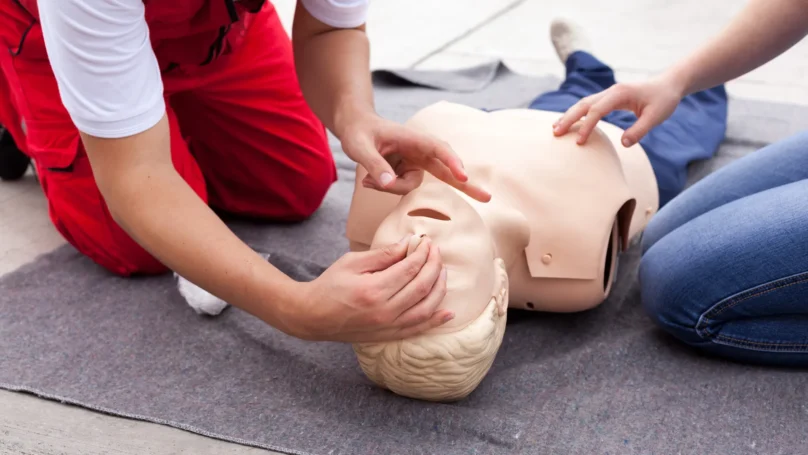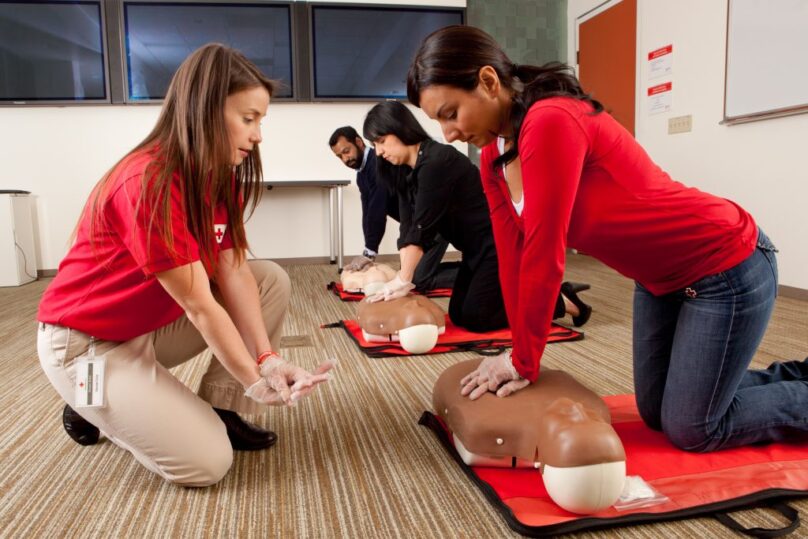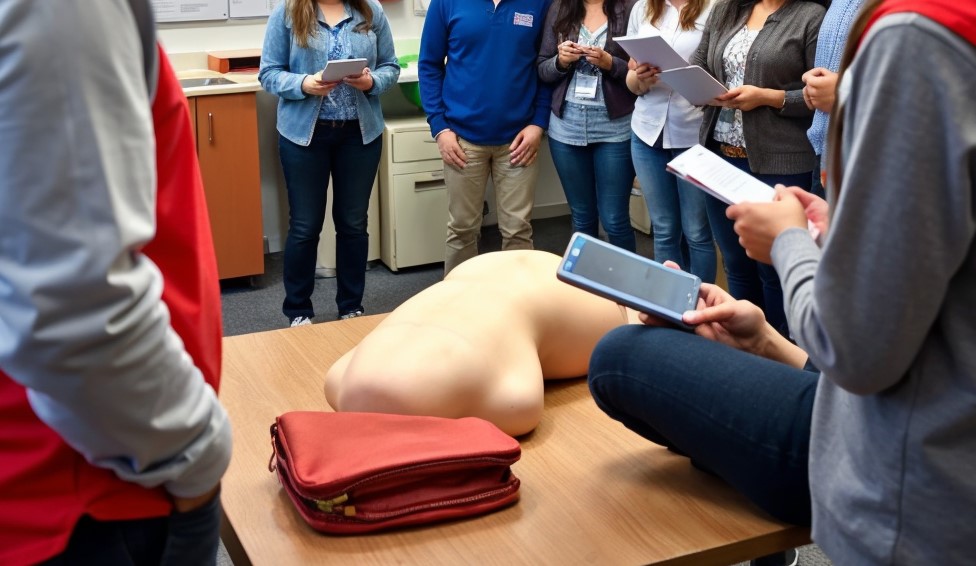Cardiopulmonary resuscitation (CPR) and first aid training are critical skills that can save lives in emergencies. Although most people acknowledge the importance of these skills, they are not universally taught in schools. This oversight means that many students graduate without the necessary knowledge to assist in life-threatening situations. Making CPR and first aid certification mandatory in schools could bridge this knowledge gap, equip students with life-saving skills, and significantly enhance community safety. The necessity for such training becomes evident when considering the potential benefits, statistics on emergency situations, and the psychological empowerment gained from being prepared to help others.
Table of Contents
Understanding the Basics of CPR and First Aid

CPR is a life-saving technique used in emergencies when someone’s heartbeat or breathing has stopped. It involves chest compressions and, in some cases, artificial ventilation to manually circulate blood and oxygen in the body until professional medical help arrives. First aid encompasses a broader range of immediate care, including treating wounds, burns, and fractures and providing essential care during various emergencies, such as choking or allergic reactions. Having these skills means being prepared to react effectively in critical moments.
According to the American Heart Association, immediate CPR can double or triple a cardiac arrest victim’s chances of survival. Similarly, knowledge of basic first aid techniques can make the difference between life and death in other emergencies, such as severe bleeding or anaphylactic shock. Thus, integrating these certifications into school curriculums would empower students and foster a culture of preparedness. For more information on CPR certification, please visit cprcertificationnow.com.
The Importance of Early Education in CPR and First Aid
Teaching CPR and first aid in schools ensures that students are exposed to these life-saving skills early on. Studies have shown that people who learn these skills at a younger age retain the knowledge longer and are more confident in their ability to assist during emergencies. Schools are the ideal environment for this education because they reach a large, diverse population.
Many school-related emergencies could be mitigated or managed more effectively with the presence of trained individuals. Whether it’s a sports injury, an allergic reaction in the cafeteria, or a sudden cardiac event, having students who know CPR and first aid can dramatically increase the chances of a positive outcome. Beyond the immediate school environment, these skills extend to the home and community, where students can assist family members, neighbors, or strangers in distress.
Statistics Highlighting the Need for Mandatory Training
The statistics regarding sudden cardiac arrests and other emergencies are sobering. Sudden cardiac arrest (SCA) is a leading cause of death in the United States, with over 350,000 out-of-hospital cardiac arrests annually. In these cases, survival rates decrease by 7-10% for every minute that passes without CPR. This stark reality underscores the need for immediate response capabilities, which would be greatly enhanced if more people, including students, were trained in CPR.
Furthermore, about 70% of out-of-hospital cardiac arrests occur in homes. This means that having CPR-trained individuals in households could significantly increase survival rates. By mandating CPR and first aid training in schools, the number of people capable of providing life-saving assistance would increase, improving overall community health outcomes.
Psychological Benefits of CPR and First Aid Training
Beyond the practical benefits of CPR and first aid training, there are also psychological advantages. Knowing how to respond to emergencies reduces the feeling of helplessness that often accompanies such situations. This confidence can improve mental well-being, as individuals feel prepared to handle unexpected crises.
In schools, this confidence can foster a safer environment, as students and staff alike know that trained individuals can provide immediate assistance. This preparedness creates a sense of security, reducing anxiety about potential emergencies and promoting a more focused and conducive learning environment.
Implementation of CPR and First Aid Training in Schools
Integrating CPR and first aid certification into school curriculums may seem daunting, but it is achievable with proper planning and resources. Schools can collaborate with certified training organizations to provide professional instruction. This could be integrated into health education classes or offered as a separate course.
Schools could also implement refresher courses to ensure students maintain their skills over time. Utilizing online resources and practical sessions could create a comprehensive training program without overwhelming the school’s schedule. The cost of these programs is relatively low, especially when compared to the potential benefits of saving lives. Moreover, grants and partnerships with healthcare organizations could offset expenses, making it a viable option for schools with limited budgets.
Comparative Table on CPR and First Aid Training Benefits

A comparative analysis of the benefits of implementing CPR and first aid training in schools reveals significant positive outcomes:
| Aspect | Without Training | With Training |
| Emergency Response Time | Longer response time; waiting for EMTs | Immediate response by trained students |
| Survival Rates | Lower survival rates in emergencies | Higher survival rates; quicker intervention |
| Confidence and Empowerment | Feelings of helplessness | Increased confidence and preparedness |
| Community Impact | Limited emergency responders | More community members capable of assisting |
| Long-term Knowledge Retention | Lack of knowledge passed on to next generation | Skills retained and passed down |
Global Examples of Successful Programs
Countries like Norway and Denmark have successfully implemented mandatory CPR training in schools, leading to some of the highest survival rates from cardiac arrests worldwide. These programs demonstrate that early education in CPR and first aid can create a society where helping others in emergencies is a common, practiced, and valued skill. Implementing similar mandatory programs in other countries could help build resilient communities where more individuals are prepared to act swiftly and effectively in emergencies.
Conclusion
Mandatory CPR and first aid certification in schools is a proactive step toward creating safer communities. The ability to save a life is not just a valuable skill but a civic duty that should be ingrained in every individual from a young age. By integrating these certifications into school curriculums, we can empower students, enhance community safety, and instill a culture of readiness and compassion. The benefits far outweigh the costs, as trained individuals can mean the difference between life and death.
Related Posts:
- Home Insurance for First-Time Buyers ─ Key Things…
- Knife Aid Net Worth 2024: A Comprehensive Analysis
- 10 Things Not To Talk About On Your First Date With…
- Instincts in Gambling: Should You or Not Trust Your Gut?
- Beyond the Basics ─ 10 Advanced iPhone Settings You…
- How Long Should You Play Video Slots? Finding the…













